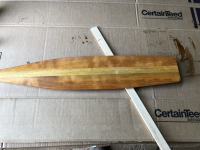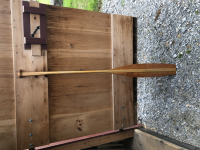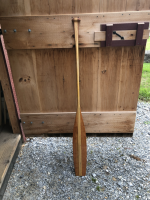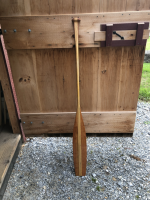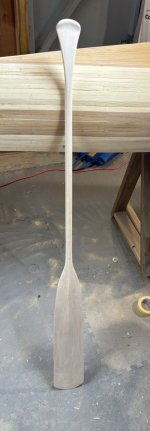Last winter I read Jerry Dennis' book, "From a Wooden Canoe". In one chapter, Mr. Hitchcock’s paddles were praised and they peaked my interest. I found his email and reached out to him to see if he was still making paddles. I received an email back that day informing me he had a couple left from his last “log” (more on that later). They were not as highly figured as his typical paddles and he would sell one at a reduced cost. We wound up trading several emails and spoke at length about his process.
His paddles are made from veneer grade maple logs that he has split rather than milled. This provides very stable blanks that he is able to carve incredibly thin. He has posted on the WCHA forum and his description of how he creates a paddle can be found here-

 forums.wcha.org
forums.wcha.org
This is by far my favorite paddle. It only weighs 1lb 2oz. and the blade thickness is 1/8”. It is surprisingly robust as I can really move a lot of water without too much flex.
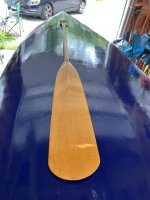
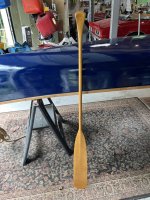
The below is in comparison to my Bruce Smith.
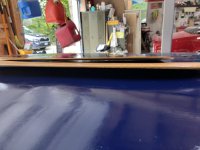
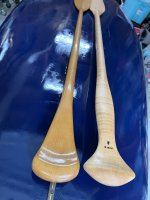
In our conversation I mentioned I was interested in paddle building and he offered to share some knowledge in his shop. So back in May, I drove out to spend some time. He was very generous with his time and knowledge. He helped me rough out a blank to take home and finish. I couldn’t thank him enough.
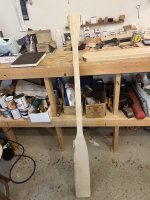
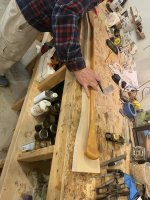
Sometimes people cross your path that really inspire. I am excited to complete what we started and I will post when it is done.
This is an example of his typical work. I have dibs on one similar if he makes another batch!
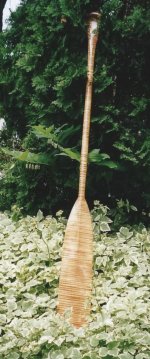
Bob
His paddles are made from veneer grade maple logs that he has split rather than milled. This provides very stable blanks that he is able to carve incredibly thin. He has posted on the WCHA forum and his description of how he creates a paddle can be found here-
Hitchcock Paddles
Hi: This is Peter Hitchcock. I am planning on making 2 paddles this summer which will be for sale. If you have interest you may call my cell @ 716-598-0236. I will make some postings discussing wood selection, why I do it the way I do. It will take multiple paragraphs to do that and I hope...
This is by far my favorite paddle. It only weighs 1lb 2oz. and the blade thickness is 1/8”. It is surprisingly robust as I can really move a lot of water without too much flex.


The below is in comparison to my Bruce Smith.


In our conversation I mentioned I was interested in paddle building and he offered to share some knowledge in his shop. So back in May, I drove out to spend some time. He was very generous with his time and knowledge. He helped me rough out a blank to take home and finish. I couldn’t thank him enough.


Sometimes people cross your path that really inspire. I am excited to complete what we started and I will post when it is done.
This is an example of his typical work. I have dibs on one similar if he makes another batch!

Bob


